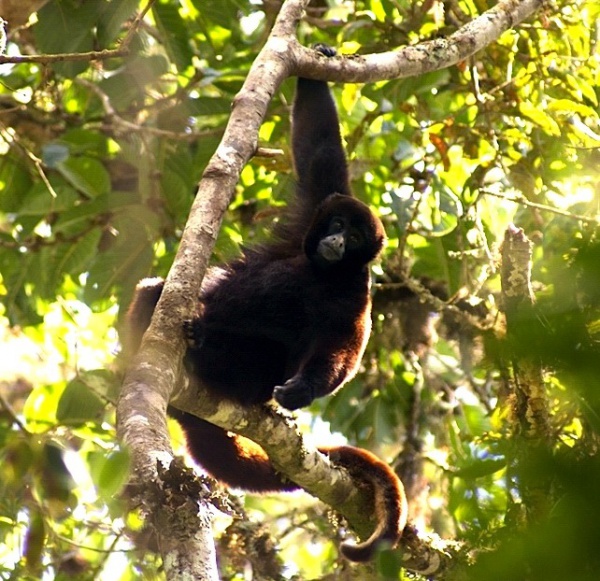Facts About Yellow-tailed woolly monkey
The yellow-tailed woolly monkey is a rare and fascinating primate native to Peru, specifically in the Andean regions of Amazonas and San Martín. Initially classified under the genus Lagothrix, there has been some debate over whether it should be placed in the Oreonax genus instead. First described in 1812, the species was thought to be extinct until its rediscovery in the 1970s.
These monkeys are quite striking, with their long, dense fur exhibiting shades of mahogany and copper, and a distinctive yellowish tail. Known for their social behavior, they sometimes display aggressive interactions. They lead an arboreal lifestyle, spending most of their time in trees.
Yellow-tailed woolly monkeys inhabit montane cloud forests at elevations ranging from 1,500 to 2,700 meters above sea level. Unfortunately, they face significant threats from habitat loss due to deforestation, agriculture, logging, and hunting. Their diet primarily consists of fruit, but they also consume leaves, flowers, insects, and even soil to obtain essential minerals.
Since their rediscovery, ongoing conservation efforts have aimed to protect these monkeys. Various protected areas have been established, and organizations like Neotropical Primate Conservation are working diligently to save them. Despite these efforts, the yellow-tailed woolly monkey remains critically endangered. Their limited distribution, slow reproductive rate, and fragmented habitat pose significant challenges to their survival.
To combat these threats, conservationists are implementing community-based initiatives and ecotourism projects designed to protect this incredible species from extinction.

 Brazil
Brazil